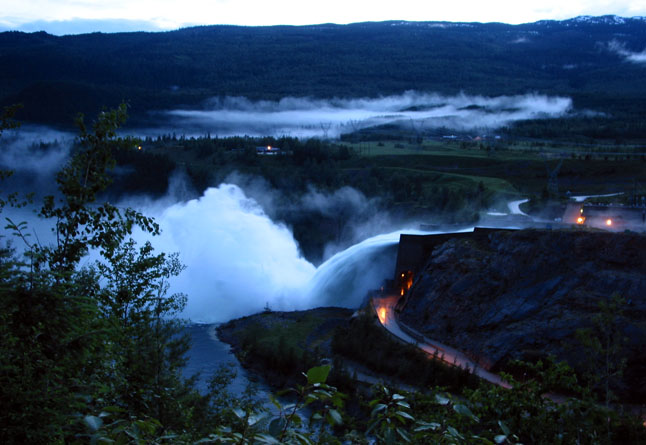There was so much rain last weekend that BC Hydro released a lot of water through the Revelstoke Dam spillways.
Quite a number of people went to see this sight over the weekend and there are some other photos floating around, but these three by BC Hydro’s Jennifer Walker-Larsen are pretty darned good. They appear especially dramatic because they were taken in failing light.
“The duration of the continuous spill depends on weather, inflows, and electricity market conditions but is expected to continue at least until the end of Friday June 22,” she said.
Here are a couple of public safety reminders:
“During this spill period, Columbia River boaters and shoreline users are advised to always avoid the area immediately downstream of Revelstoke Dam in case of sudden flow changes,” Walker-Larsen said. “Revelstoke Reservoir boaters must not enter the Revelstoke Dam log boom. The spill can be safely viewed from the Revelstoke Dam Visitor Centre access road. BC Hydro would like to remind the public that according to road signage, parking along highway 23 North in the area of Revelstoke Dam is not recommended due to risk of rockfall.
“Currently there are high water conditions and an abundance of energy in B.C. and the Pacific Northwest. Inflows into Revelstoke Reservoir from snowmelt and recent rain events are well above normal. The historical average inflows for Revelstoke reservoir in June is 24,000 cubic feet per second. Over the last week we have seen inflows averaging 33,000 cubic feet per second and yesterday inflows were nearly double at 42,000 cubic feet per second.
“The spill is needed to pass inflows and maintain the Revelstoke Reservoir water level at normal full pool level. Although uncommon, a spill from the Revelstoke Dam is a typical operation for hydroelectric facilities and does not present any risk to dam, employee or public safety. BC Hydro routinely tests the Revelstoke dam spillway as part of a regular maintenance program and is monitoring the Columbia River downstream from Revelstoke Dam for environmental impacts including impacts to fish populations.
You can also view a video of this below the photos on this page.
Many thanks, Jen!






